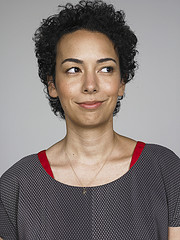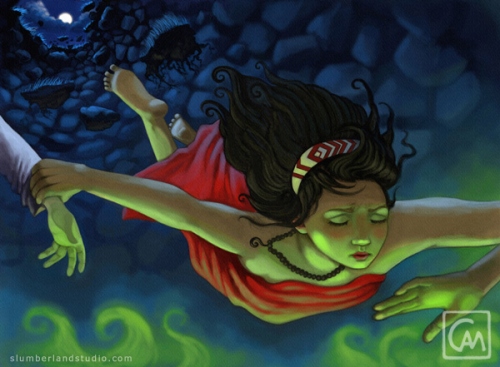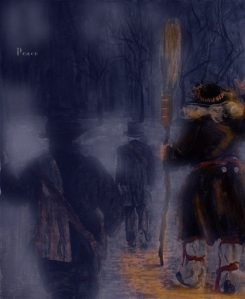 Maya Rock is an editor and writer. She has agreed to critique the Writer’s Picture Prompt for February. You may remember her from her time as an agent at Writer’s House. Here is more about Maya:
Maya Rock is an editor and writer. She has agreed to critique the Writer’s Picture Prompt for February. You may remember her from her time as an agent at Writer’s House. Here is more about Maya:
She graduated from Princeton University in 2002 and has worked in publishing ever since (save for a happy, extended three-month jaunt to Paris). She began literary agenting at Writers House in 2005; there she edited and sold nonfiction, pop culture, memoir, and young adult fiction projects by Bethany Griffin, Rae Mariz, Heather Wagner, and Alison Weaver. As an agent, she loved the thrill of finding new voices and helping nurture talent. On the side she developed her own talent by taking creative writing classes. In 2010, she left Writers House to pursue a full-time freelance writing and editing career, a decision that’s given her the freedom to follow her many interests–ranging from asking semisnooping questions in the name of journalism to poring over the Chicago Manual of Style in search of grammatical perfection. She is the author of two YA novels, forthcoming from Penguin Putnam in 2013.
Here is February’s Picture Prompt:

Deadline to submit is February 20th. Please attach your double spaced, 12 point font, 23 line first page to an e-mail and send it to kathy(dot)temean(at)gmail(dot)com. Also cut and paste it into the body of the e-mail. Put “February 20th First Page Prompt” in the subject line.
ILLUSTRATORS: Here is your chance to show off a little. Last month only one of you submitted a piece of art. The prompt for February is something that will convey the flavor of the month. Lots of things go on in February; Ground Hogs Day, Valentine’s Day, and President’s Day to name a few. This leaves you quite a broad range of ideasto be creative. I will post on Feb 29th, so I need to receive your illustrations by February 27th. Please make sure the illustration is at least 500 pixels wide and include a blurb about you and a link to see more of your work. Please send it to kathy(dot)temean(at)gmail(dot)com and put “February Illustration” in the subject box.
Maya makes a living working with authors from the earliest stages of their projects and has helped develop these authors’ ideas and line-edited their work and get their project into shape for publishers by fine-tuning language, strengthening structure, and enhancing characterization and narrative. Maya is able to make sure your work reaches its fullest potential. You can contact her at [email protected] for rates and availability.
Here is Maya’s website: www.maya-rock.com
Talk tomorrow,
Kathy
Filed under: Agent, Editors, inspiration, opportunity, Writer's Prompt Tagged: editorial Consultant, First Page Critique, Free Fall February, Maya Rock 4 Comments on Free Fall February – Guest Critiquer Maya Rock, last added: 2/10/2012



 Our Guest Critiquer for January is Author Dianne Ochiltree. She is the author of nine published children’s books and does freelance editorial work.
Our Guest Critiquer for January is Author Dianne Ochiltree. She is the author of nine published children’s books and does freelance editorial work. UNTITLED by Su Lael
UNTITLED by Su Lael Children’s book writers were treated to another fun and informative first page session this week in Princeton, hosted by the NJ-SCBWI. Editors Michelle Burke and Allison Wortche of Knopf & Crown Books For Young Readers listened to 30 first pages read aloud as they followed along with each manuscript page. Then they gave their immediate first impressions of the work.
Children’s book writers were treated to another fun and informative first page session this week in Princeton, hosted by the NJ-SCBWI. Editors Michelle Burke and Allison Wortche of Knopf & Crown Books For Young Readers listened to 30 first pages read aloud as they followed along with each manuscript page. Then they gave their immediate first impressions of the work.
Well, I’m excited! I already sent in my prompt and can’t wait to hear what Maya has to say
Is this is open for finished works, and WIP?
Ah. I think i get it-we are to write using the illustration as a prompt. Editiing all day has left me skimming over words. Thank You.
lol Karen!